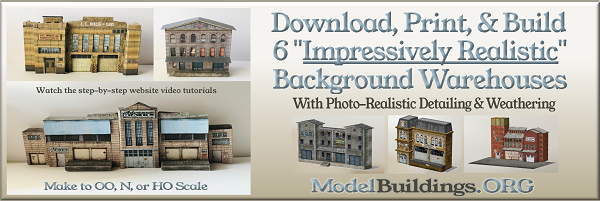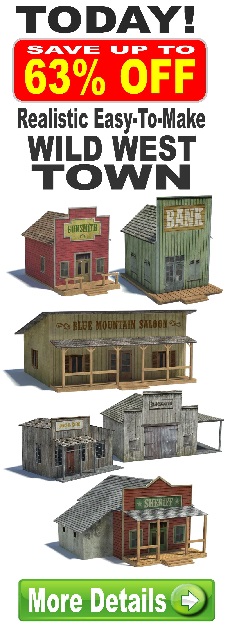Everything on model trains, model railroads, model railways, locomotives, model train layouts, scenery, wiring, DCC and more. Enjoy the world's best hobby... model railroading!
Overcoming Derailments
Bill models OO gauge (similar to HO) and asks readers:
“I have a new system put up which runs very well, however now for some reason it’s starting to derail. Different types of locomotives run well for a certain amount of time, then they start derailing for no apparent reason. I am not a novice modeller, but I’m getting fed up with the continual derailment. Sometimes I can find a small problem which I put right, sometimes I find nothing, and I’m STILL getting problems. I have checked the back to back on all the locos and found that some were out and some were ok, which I soon put right with the back to back gauge. I’m thinking of giving the whole thing the heave-ho so if someone could come up with some suggestions, I would be much obliged. Thanks in advance.”
6 Responses to Overcoming Derailments
Leave a Reply
















Hiya Bill, Derailments are common . I run HO ,I got a verity of locos I run. Some problems usually are switches or others call it the points. Some times its the rails. The tracks got to be straight for the cars to roll right.. Other problems are the wheels. But most of all is SPEED. Just like a real train, you can run too fast . I like to High Ball sometimes and I have a derailment. There are lots of little problems that derail trains. I been model railroading for 45 years. I had all kinds of problems. That’s what I love about the hobby. It has many challenges. So don’t let the derails get you down. Keep the layout and ask around to local hobby shops.They seen there share of problems. But for me ,it has been trial and error over the years. Good luck and enjoy your trains. loujay6299
Things do tend to settle over time so check the rail joints are still smooth and that there is no build up of dirt in the frogs and checkrails of points (switches). Are there any particular spots where the de-railings occur?
Robert
Bill, These 2 guys have hit most likely items so far. I would point out that wheels, especially plastic wheels have a tenancy to get build up like a chunk of coal seems to be glued to the wheel rolling face. (I usually call it goo) It makes rough riding of the car and can interfere with close quarter areas such as guard rails and frogs on your switches. I run trains at a friends house on Friday nights. On his layout he has rail joints as they connect with switches jog. The rail does not have a continuous flow into the switches. Most of his track is code 83 which is a shorter rail and in real railroading is a lighter rail. This rail does not really matter in height unless your ballast is too deep. He has some of that where the wheel flanges start riding on the ballast and not the rail. When this happens at his layout the cars look like a jeep going off roading bouncing through these areas. So look at that. Check your gauge of the rails Different temperatures of the room will expand the rails enough that your joints want to bow. Try some of this. Also as you lay new track make your curves and switches as shallow as you can depending on your room. from Newman
Also run a straight edge over your tracks to make sure no-one has leaned on them causing a dip in one rail that would allow a wheel to slip off to the side.
Robert
That locos run fine for a while then start having problems suggests that the problem is with the locos over time, not the track. If the derailments are occurring at the same place(s) on the layout, suspect the track. Perhaps, it is as Newmann says and there is some kind of gunk building up on the wheels. Perhaps the flanges are getting nicked somewhere (that could be a track problem) so that they catch. Perhaps the wheelsets are not keeping proper gauge over time (moving on the axle?). Perhaps the pivot points on the trucks need cleaning or lubrication to restore free movement. Perhaps some part of the shell or end piece has moved and is interfering with the free movement of the truck. (That could even be a screw that’s loosening up or a bent coupler.) I hope the problem does not discourage you out of the hobby. Perhaps you can view it not as a frustration, but as a curiosity or as a mystery that you, the ace railroad detective, will surely solve someday. (Has Ned Kelly figured out a way to derail trains, or is there a quality control problem at the factory or service yard?)
I have a couple MTH engines that derail on an elevated oval I have on my layout. I run a Kato Shinkansen high speed bullet train on the same oval with no derailments even at high speed. Mmmm… I’m going to watch my engines very closely next time I run them and see where the wheel is jumping the track. Don’t give up!! Watch closely to see where and how the derailment is happening and replace that section.